Energy Saving
With the recent increase in electricity prices, we are all looking at ways to reduce our energy bills and there are plenty of sites offering useful advice and tips. In this article, we will try and put some actual figures on the amount of savings that can potentially be made. The default cost per kWh used for the calculations is based on the current standard variable rate tariff of 34.0p/kWh (October 2022), but you can adjust the slider below to reflect your own energy costs and all of the calculations in this article will automatically update.
10p
60p
|
Avoid Overfilling the Kettle
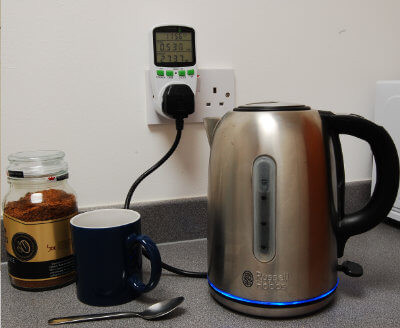
One of the top tips often given is not to overfill your kettle, but how much energy can you actually save? If you are in the habit of half filling the kettle just to make a single cup of tea, you could potentially be making a yearly saving of £33.26, based on the average of 4 cups a day.
The minimum fill level on most kettles is 0.5L, but a typical mug is about 0.3L. To make the most energy savings, it may be worth investing in a kettle with a flat heating element that has a lower fill level or using a smaller travel type kettle.
Kettle used: 4 times per day
1
10
|
| Litres | Usage | Daily Energy | Week | Month | Year | |
|---|---|---|---|---|---|---|
| 0.3L | X 4 | 0.128 kWh | ||||
| 0.5L | X 4 | 0.216 kWh | ||||
| 1.0L | X 4 | 0.396 kWh | ||||
| 1.7L | X 4 | 0.712 kWh |
Figures based on 34.0p /kWh and the energy consumed to bring water from 16°C to a boil using a typical household kettle.
Energy Saving when Cooking
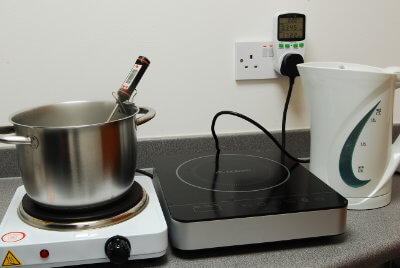
Another energy saving tip is to boil water used for cooking in the kettle, rather than directly on the hob. We found that this depends on the type of hob that you have. Inductions hobs are almost as efficient as a kettle for bringing the water to a boil, so there are minimal savings to be made. However, if you have a solid plate electric hob, boiling water in the kettle uses 40 - 50% less energy. Putting the lid on a pan also makes a big difference. When it comes to simmering water on the hob, we didn't find much difference in efficiency between an induction hob and a solid plate electric type, but putting the lid on the pan makes a big difference to the overall energy used.
Cost of Boiling 1.5L Water
Use per week: 5
1
20
|
| Energy to Boil | Weekly Use | Week | Month | Year | |
|---|---|---|---|---|---|
| Kettle | 0.162 kWh | X 5 | |||
| Electric Hob (No Lid) | 0.345 kWh | X 5 | |||
| Electric Hob (With Lid) | 0.270 kWh | X 5 | |||
| Induction Hob (No Lid) | 0.184 kWh | X 5 | |||
| Induction Hob (With Lid) | 0.178 kWh | X 5 |
Cost of Simmering (95°C) 1.5L Water
Simmer Time: 10 minutes
5
60
|
| Simmer Time | Energy Used | Weekly Use | Week | Month | Year | |
|---|---|---|---|---|---|---|
| Electric Hob (No Lid) | 10 minutes | X 5 | ||||
| Electric Hob (With Lid) | 10 minutes | X 5 | ||||
| Induction Hob (No Lid) | 10 minutes | X 5 | ||||
| Induction Hob (With Lid) | 10 minutes | X 5 |
Appliances on Standby
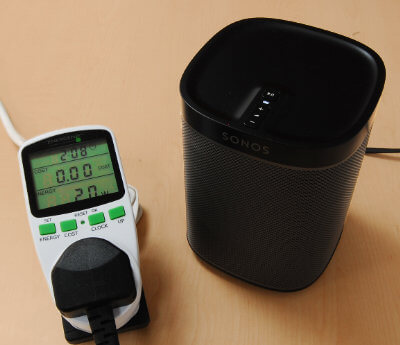
Electrical appliances without a physical on/off switch will generally consume a small amount of power when not in use unless switched off at the wall. Typical examples include televisions, microwaves, battery chargers, smart speakers, laptop chargers, games consoles, etc. We tested as many of these items as we could find and found they can consume anywhere between 0.5W and 20W, whilst on standby. The typical consumption of most modern appliances was around 1.5W. Although this is fairly insignificant individually, the quantity of these items in most homes, the length of time they are left on, and the recent increase in energy costs mean that there are worthwhile savings to be made by ensuring these items are switched off at the wall when not in use.
Number of appliances on standby: 5
1
20
|
Average power consumption: 1.5W
0.5W
20W
|
| Power | Appliances | Standby | Week | Month | Year |
|---|---|---|---|---|---|
| 1.5W | 5 | 6 hours/day | |||
| 1.5W | 5 | 12 hours/day | |||
| 1.5W | 5 | 24 hours/day |
Energy Saving Light Bulbs
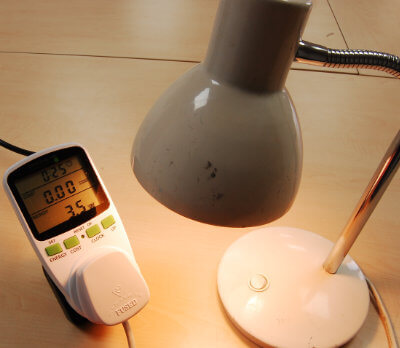
Incandescent light bulbs were removed from sale in 2012, but the sale of halogen bulbs was only stopped in September 2021*, so it's likely that most UK homes will still have halogen bulbs in use. Although halogen bulbs use about 25% less energy than the equivalent incandescent bulb, there are still significant savings to be made by switching from halogen to LED bulbs.
*Old stock of halogen bulbs can still be sold and not all halogen bulb types are banned.
Cost Comparison of Bulb Types
Light on for: 3 hours per day
1
24
|
Annual Cost:
| Incandescent | Halogen | CFL | LED | |
| 100W 1,600 lumens |
||||
| 75W 1,100 lumens |
||||
| 60W 800 lumens |
||||
| 40W 450 lumens |
Power Monitor
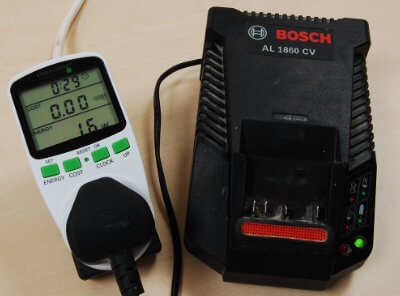
If you are looking to check the power consumption of your own appliances, the power monitor we used is the Energenie Energy Saving Meter, model ENER007. Prices online are around £15 - £20.